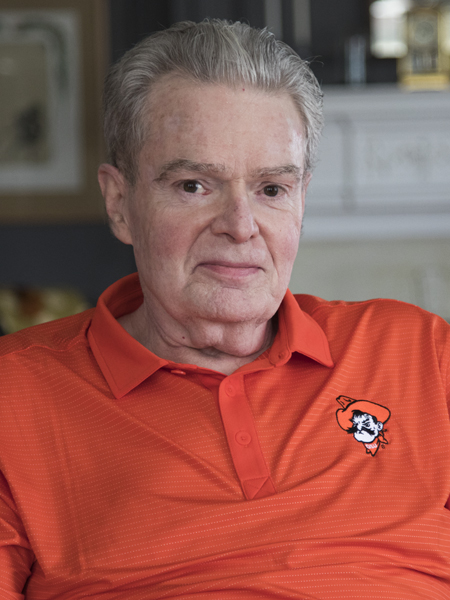Inspired to give
Retired Professor Bob Parks creates estate gift to support Reed Center programming
 When Bob Parks was considering his estate plan, he realized his entire life was tied to Oklahoma State University and the art of printmaking. That made it an easy decision to designate the bulk of his estate to benefit the Doel Reed Center for the Arts. OSU's interdisciplinary living learning laboratory and museum incorporates the former Taos, New Mexico, homestead of legendary printmaker Doel Reed as well as his wife, Jane, and daughter, Martha.
When Bob Parks was considering his estate plan, he realized his entire life was tied to Oklahoma State University and the art of printmaking. That made it an easy decision to designate the bulk of his estate to benefit the Doel Reed Center for the Arts. OSU's interdisciplinary living learning laboratory and museum incorporates the former Taos, New Mexico, homestead of legendary printmaker Doel Reed as well as his wife, Jane, and daughter, Martha.
"After my wife, Cynthia, passed away in 2014, I thought, 'What better way to help OSU than to set up some kind of bequest,'" Parks said. "It's really a very simple story. As a student, I was just kind of your average spoiled, middle-class brat from Oklahoma City. I wasn't serious about school and flunked out the first year. I decided eventually I needed to be a good student and make something of myself. OSU gave me that chance."
Parks earned both an undergraduate education and 34 years of faculty salary at OSU, and said he could never fully repay the university for the difference it has made in his life.
"Some of the most important people in my life were people at OSU — instructors all over campus. I had lots of mentors, not the least of which was J. Jay McVicker. I would never have become a printmaker if it weren't for him, so I'm very happy that I will be able to help OSU."
Jay McVicker was a two-time OSU graduate, earning both a 1940 bachelor's and 1941 master's degree under the tutelage of Doel Reed. McVicker succeeded Reed as head of the Art Department in 1959, serving in that capacity until his own retirement in 1977. Parks said he studied printmaking under McVicker "practically all the time I was at OSU" until his 1969 completion of a bachelor of fine arts.
That was also the year that he met Doel Reed.
"Jay said, 'If you're going to be a printmaker, you need to go meet Doel Reed,'" Parks said. "So when I had the occasion to be in Taos, I dropped by and spent an hour or two with him. He was just as described by Jay — charming and irascible and still working, still very active in the studio. I was in the studio with him and we had a drink on the porch." Parks admits that he was not confident in his ability to continue on to graduate school.
"I had the attitude that I really couldn't compete out there," Parks said. "I applied to 10 graduate schools, thinking I wouldn't get into any of them, and as an Okie I wouldn't be able to compete if I did get in. It turned out I was accepted to seven of the 10, with offers of funding and all that. I chose Tulane to study printmaking, and I found out I was better prepared and more willing to solve problems and think on my feet than a lot of the other people in my class who had come from places considered more prestigious. So OSU prepared me very well."
But after completing a 1971 master of fine arts with an emphasis in intaglio printmaking, Parks discovered "there were no art jobs in this country. I picked up the phone one day and it was Jay McVicker, and he said he had a job if I wanted to teach. I was on the faculty until I retired in 2007."
It was there that he met his future wife, who was also an art professor.
His role on the art faculty is what led to him being an early supporter of the Reed Center, as well as building a friendship with Martha Reed. She was an OSU graduate who lived in Taos for 57 years before she passed in 2010. She had contacted her alma mater in 2005 with the idea of using her estate to honor her father's legacy. That is what became the Reed Center.
"During those first few years, it seemed like I was out there all the time," Parks said. "I really got to know Martha and really grew to love her. She was difficult and charming and irascible and all the things I remembered about Doel. She was very sweet to me and appreciated what we were trying to do for her. She was also very kind and open when we took students out there in the early days."